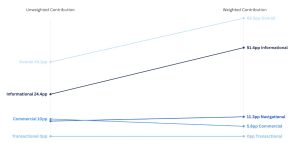At the Spiegel Research Center, we collaborate with faculty, organizations, and students on advertising research projects. One of the ways we engage students is through the Spiegel Scholars Program, where they collect and analyze real-world data, develop recommendations for marketing managers, and identify opportunities for future research at the Spiegel Research Center. This summer, the team examined how artificial intelligence is changing how people search online and how those changes might shift search engine optimization (SEO) norms. One of our wonderful scholars, Muhammad Iqbal, analyzed over a thousand search results to understand how Google’s new AI overviews could be changing brand visibility and discovery. We’re proud to share his work—an excellent example of how student research at Spiegel connects directly to the future of marketing and consumer insights.
—Ed Hunt, Director of the Spiegel Scholars Program
Google AI Overviews Decoded: What 1k+ Sources Reveal About Search
Google’s AI Overviews now mediate brand discovery across nearly half of search queries, fundamentally altering how consumers encounter brand information. A quick test of 160 queries across four industries and intent types found that 43% triggered AI Overviews.
Figure 1. Informational intent drives AI visibility

For informational queries, AI Overviews were triggered 98% of the time, versus 40% for commercial, 35% for navigational, and 0% for transactional. This suggests that AI Overviews dominate knowledge queries while Google maintains traditional search results for high-intent, monetizable searches.
Figure 2. Owned media wins half the battle

Brand-controlled properties captured 47% of AI Overview sources, underpinning the growing importance of strategic communications to digital retail performance.
Figure 3. Earned reflects digital PR landscapes

Of all earned media sources, 84% belonged to affiliate channels or publishers. This demonstrates that SEO and digital PR now operate as unified disciplines requiring coordinated strategy.
Shared channels offer untapped opportunity
Social proof through Reddit, YouTube, and Quora contributed 11% of attributions with less competitive saturation than owned or earned spaces.
The CTA for Brand Managers
- Audit priority queries across intent types to map current AI Overview trigger rates and source attribution patterns: understanding where your brand appears versus competitors establishes the strategic baseline.
- Analyze which PESO sources dominate your query space and assess content gaps: our data, for example, shows affiliate publishers and owned content win in informational searches, requiring different partnerships than traditional PR delivers.
- Deploy coordinated strategies that optimize owned content for authority and discoverability, build relationships with affiliate publishers, and refine your external communications strategy to align with digital marketing goals.
Data, Methods & Discussion
The study analyzed 160 queries distributed equally across four intent types and four industries, yielding 1,024 source attributions from 69 AI Overviews. Sources were coded into five main categories: Paid, Earned (split into affiliate/non-affiliate channels), Shared, Owned, and Other.
Figure 4.

When weighted by real intent distribution data, the AI Overview trigger rate increases from 43 pp to 69 pp. Weighting also reveals informational intent’s contribution, rising from 24 pp to 51 pp. In larger-scale studies, AI Overview trigger rates and the share of informational intent will likely be higher than the raw data indicates.
After weighting, the resulting PESO mix showed only minor distortions (± 3 pp), highlighting the reliability of the findings for further strategic analysis.
